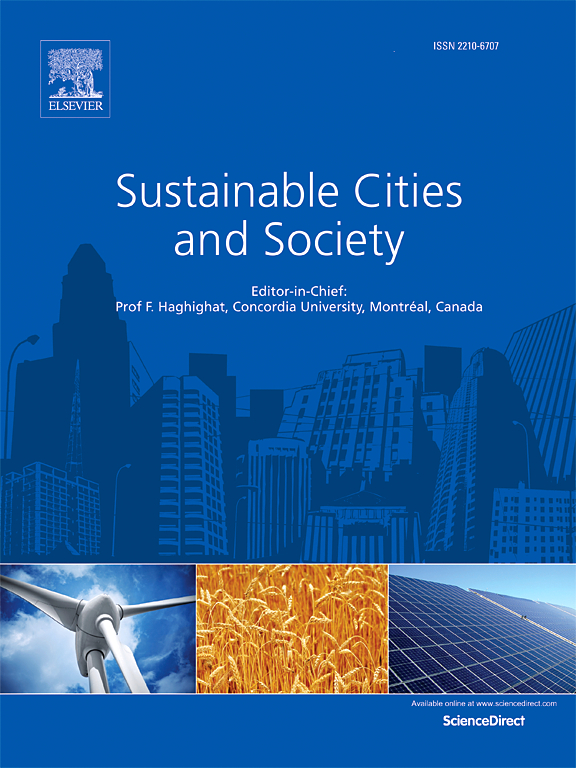Model fusion algorithms for digital twinning in built environments: Extending behavioral models in a real HVAC system
IF 10.5
1区 工程技术
Q1 CONSTRUCTION & BUILDING TECHNOLOGY
引用次数: 0
Abstract
Digital twin-enabled building operations can improve energy efficiency and reduce carbon emissions from heating, ventilation, and air conditioning (HVAC) systems. However, designing a digital twin model without a measured target variable is inevitable owing to the limited sensing environment and sensor malfunctions in massive building systems. To address this challenge, this study proposes a model fusion method that enables in situ digital twinning for HVAC systems. The proposed method provides an algorithm to effectively combine three model fusion techniques: model coupling, prediction model assembly, and benchmark model assembly, thereby achieving a more accurate and extensive digital twin model environment during HVAC operations. Model coupling is a technique that indirectly calibrates a physics-based prediction model using a benchmark model developed through a data-driven approach. Model assembly involves the additional use of auxiliary models to prevent modeling failures, where prediction model assembly targets the prediction model, and benchmark model assembly focuses on the benchmark model. The proposed method was applied to the (1) mass flow rate and (2) water temperature at the return-side chilled water loop in a real HVAC system. After applying the combinations of model fusion techniques according to the proposed method, the mass flow rate was obtained with a mean absolute percentage error (MAPE) of 2.91 %, and the return water temperature was obtained with a root mean squared error (RMSE) of 0.47 °C. These results demonstrate the effectiveness of model fusion techniques and their combinations for enhancing the accuracy of in situ digital twinning and extending in situ behavioral models for operational HVAC systems.

建筑环境中数字孪生的模型融合算法:在实际HVAC系统中扩展行为模型
数字孪生建筑运营可以提高能源效率,减少供暖、通风和空调(HVAC)系统的碳排放。然而,在大型建筑系统中,由于传感环境的限制和传感器的故障,设计一个没有测量目标变量的数字孪生模型是不可避免的。为了解决这一挑战,本研究提出了一种模型融合方法,该方法可以实现HVAC系统的原位数字孪生。该方法提供了一种算法,将模型耦合、预测模型装配和基准模型装配三种模型融合技术有效地结合起来,从而在暖通空调运行过程中实现更准确、更广泛的数字孪生模型环境。模型耦合是一种使用通过数据驱动方法开发的基准模型间接校准基于物理的预测模型的技术。模型组装涉及额外使用辅助模型来防止建模失败,其中预测模型组装以预测模型为目标,而基准模型组装则侧重于基准模型。将该方法应用于实际暖通空调系统中(1)质量流量和(2)回水回路水温。采用该方法组合应用模型融合技术后,得到的质量流量平均绝对百分比误差(MAPE)为2.91%,回水温度均方根误差(RMSE)为0.47°C。这些结果证明了模型融合技术及其组合在提高现场数字孪生的准确性和扩展运行HVAC系统的现场行为模型方面的有效性。
本文章由计算机程序翻译,如有差异,请以英文原文为准。
求助全文
约1分钟内获得全文
求助全文
来源期刊

Sustainable Cities and Society
Social Sciences-Geography, Planning and Development
CiteScore
22.00
自引率
13.70%
发文量
810
审稿时长
27 days
期刊介绍:
Sustainable Cities and Society (SCS) is an international journal that focuses on fundamental and applied research to promote environmentally sustainable and socially resilient cities. The journal welcomes cross-cutting, multi-disciplinary research in various areas, including:
1. Smart cities and resilient environments;
2. Alternative/clean energy sources, energy distribution, distributed energy generation, and energy demand reduction/management;
3. Monitoring and improving air quality in built environment and cities (e.g., healthy built environment and air quality management);
4. Energy efficient, low/zero carbon, and green buildings/communities;
5. Climate change mitigation and adaptation in urban environments;
6. Green infrastructure and BMPs;
7. Environmental Footprint accounting and management;
8. Urban agriculture and forestry;
9. ICT, smart grid and intelligent infrastructure;
10. Urban design/planning, regulations, legislation, certification, economics, and policy;
11. Social aspects, impacts and resiliency of cities;
12. Behavior monitoring, analysis and change within urban communities;
13. Health monitoring and improvement;
14. Nexus issues related to sustainable cities and societies;
15. Smart city governance;
16. Decision Support Systems for trade-off and uncertainty analysis for improved management of cities and society;
17. Big data, machine learning, and artificial intelligence applications and case studies;
18. Critical infrastructure protection, including security, privacy, forensics, and reliability issues of cyber-physical systems.
19. Water footprint reduction and urban water distribution, harvesting, treatment, reuse and management;
20. Waste reduction and recycling;
21. Wastewater collection, treatment and recycling;
22. Smart, clean and healthy transportation systems and infrastructure;
 求助内容:
求助内容: 应助结果提醒方式:
应助结果提醒方式:


